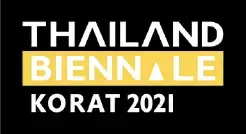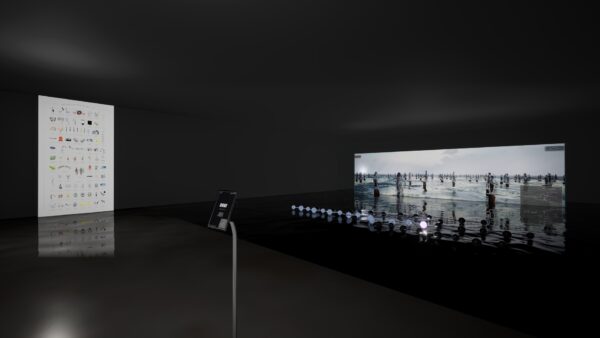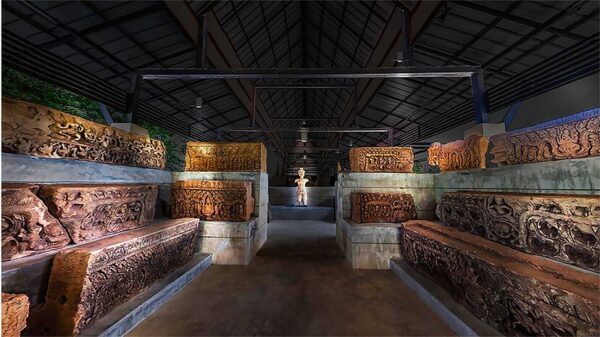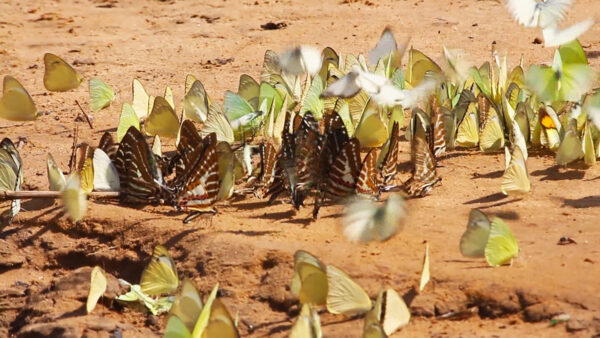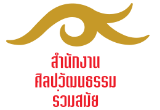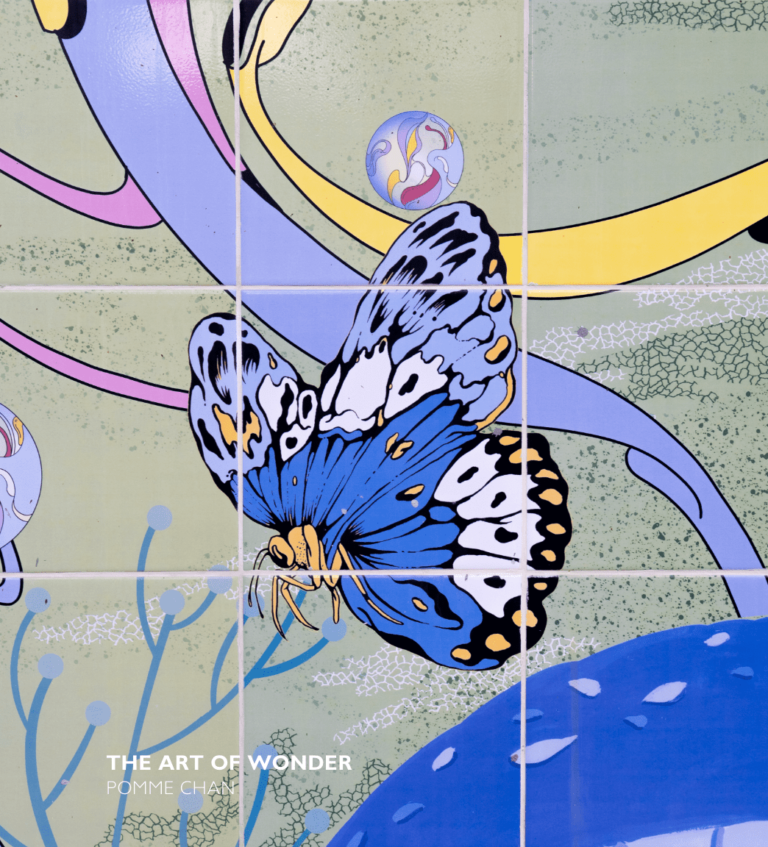News & Events
A conversation with Yuko Hasegawa
The 2021 Thailand Biennale, titled ‘Butterflies Frolicking on the Mud: Engendering Sensible Capital’, will take place in the Northeastern Thai city of Korat from December 18, 2021 – March 31, 2022. ART SG speaks to Artistic Director Yuko Hasegawa about her curatorial process, facilitating collaborations between artists and locals, and the contemporary art scene in Thailand and the region.

Yuko Hasegawa, Artistic Director of the Thailand Biennale, 2021
By Tan Siuli
The title for this year’s Thailand Biennale is an intriguing one: “Butterflies Frolicking on the Mud: Engendering Sensible Capital”. What was the inspiration or background behind this evocative title?
Yuko Hasegawa: Under this social and political climate, I am thinking about the new form of capital, which is inspired by the theory of ‘social common capital’ by Japanese mathematical economist Hirofumi Uzawa. It enriches people’s lives in both material and spiritual terms. In order to maintain social stability, it has recourse to three forms of capital: natural environment, social infrastructure, and institutional capital. These types of capital must be regulated and facilitated by professional experts and there needs to be a sense of fiduciary responsibility that respects the interests of the trustees. I think this way of thinking of capital is very sensible. Current revisionism of Marx’s ideas in his later years also seems to be relevant to this direction.
Instead of using the word ‘produce’ in relation to new capital or resources, I chose the term ‘engender’ intentionally. ‘Engender’ comes from the Latin verb generare, which means ‘to generate’ which is the act of bringing out the potential in things.
The Thailand Biennale is a nomadic one which seeks to discover the latent potential and value of various sites. It is an attempt to implement a practice that will visualize and enhance this process, in collaboration with artists / experts and local people. The main role of the curators is to facilitate all these potential resources, to achieve an activation and transformation. The goal is the detoxification of the body and spirit of this land as well as the fiduciary relationship among people.
However, under the Covid-19 pandemic, our situation became worse and worse; the team and I are trying to explore what we can do in this uncertain future. I happened to find the image of animals puddling in mud. It looked like our situation of struggling in this anxiety. But actually, this is an act to detox and a practice to engender new capital as well. The title “Butterflies Frolicking on the Mud” expresses our miserable but courageous state. It also indicates the ‘capital’ of hope that emerges from the midst of anxiety and uncertainty. When I proposed this idea during the biennale meeting, one of the staff told me about the local news which reported many butterflies araised in the Korat region during the Covid-19 pandemic because of the reduction in human migration. This was a coincidence, but one that convinced us very much.

Prasit Wichaya, The power of folk and imagination, 2021. Site-specific installation. Image: courtesy of the artist.
How does the title of the Biennale inform or translate into the curatorial processes, the selection and creation of artworks or projects, and the conceptualization of public programmes for the Biennale?
Yuko Hasegawa: One of the initial leading goals of the Thailand Biennale is to invite artists to create site-specific works at the biennale venues, to enhance the potential of the sites to be cultural capitals.
We would like to discover the latent potential and value of various sites of institutional capital, including universities, temples, museums, zoos, parks and villages of ceramic or silk production. It is an attempt to implement a practice that will visualize and enhance this process, in collaboration with artists, architects, scientists, anthropologists, and other domain experts. For instance, Brazilian artist Sandra Cinto makes big public projects to change the streetscape, and botanist Stefano Mancuso connects the trees with devices installed in the university: each project is aimed at facilitating or activating the potential of venues.
Thanks to the team of the Rajamangala University of Technology and its faculty members and coordinators, who were involved in production management, the proposals of artists working remotely were achieved. Unfortunately many public programmes planned will not be realized at this moment because of the pandemic situation. We are re-planning the online programme.
What are some of the distinctive features of the Korat region and its ecologies that have informed your artistic vision for the Biennale, and how will these be highlighted through the Biennale’s projects?
Yuko Hasegawa: For instance, Sandra Cinto covers a promenade in the center of Korat city, which had been left unmaintained, with blue tiles utilizing images of “Vision of the Future” (Korat of the future) drawn in collaboration with local children, spanning 170 meters. Botanist Stefano Mancuso and PNAT installed sensors in a giant banyan tree at a temple and connected it to a glass-enclosed pavilion with purified air produced by plants, to listen to the tree’s voice through light signals. At the Khmer relics and ethereal reliefs placed in the outdoor storage of the Phimai Museum, Japanese architect Tsuyoshi Tane activates the aura of a centuries-old ruin, by illuminating the artefacts with slowly rising and falling lighting. Thai architect Boonserm Premthada builds a pavilion in the zoo, a feeding ground for birds and other animals, providing a place of encounter for people. These are some highlights that take advantage of the character of the place and enhance it at each venue.

Sandra Cinto, The Wishes Boulevard, 2021. Site-specific installation. Image: courtesy of the artist.
The worldwide disruptions brought about by the pandemic have no doubt impacted the extent to which artists and their collaborators can travel, to research and respond to Biennale sites. How was this addressed for the upcoming Thailand Biennale? For instance, how have collaborations between artists and locals formed an alternative way of realising the Biennale concept?
Yuko Hasegawa: The Biennale was postponed several times due to the current pandemic, and the preparation of the biennale has not been a smooth journey. In the process of extensive virtual research and communications, it was inevitable for many invited artists to change and revise their proposals. However, in each revision, they have come up with creative ideas on transforming this unfortunate situation into a positive experience in collaboration with local coordinators and communities around Korat City and Phimai District.
It has been a challenge to create site-specific works with remote research in the current condition. However, the artists’ hard work and passion for creating what was best for the site, while changing their proposals a few times, combined with their incredible imagination and simulation skills, made the local staff sympathetic and involved. Consequently, the plans and visions proposed by the artists, through the interpretation and imagination of the local people, became a substantial joint production. It has been revealing an alternative way of realizing the biennale concept. More conceptual and imaginative communication and translation occurred.
For instance, Junya Ishigami conceived of a large bridge spanning a canal in the Korat city center. Due to the pandemic, the bridge construction could not commence. As a result, he replaced the bridge with a witty and elaborated installation for the biennale, and is going to exhibit a project model to show the potential of this yet to be realized project. Yllang Montenegro initially planned to make the site visit and have workshops with female immigrant workers. As the plan could not be implemented, she decided to send a message to the locals and replaced the communication linkage of the workshops from humans to plants. She will create a sculptural installation using live plants and aprons made from recycled materials by the local Filipino community. In the pavilion of the heroine of the city, Yllang’s project will explore a new form of cross-international boundary communication in the post-Corona context when physical contact is still restricted.

Krit Ngamsom, Queen Cat, 2021. Site-specific installation. Image: courtesy of the artist.
What kind of experience do you hope to impart to visitors of the Thailand Biennale? What can they look forward to?
Yuko Hasegawa: There are various and unique experiences in the different venues. Sites will be enhanced and transformed in different ways. And at one of the main venues in the university, the visitors will experience many cutting-edge technological works and global cultural diversity .
In the Phimai Museum, the outside storage will be transformed into a beautiful theatre showing the play of lights on the collection by Tsuyoshi Tane. Charlotte Dumas will focus on the complex relations between human society and animals, by using the historical context engraving on a traditional tile with elephant drawings in the Netherlands, inspired by a conversation between the artist and her daughter during the lockdown period. Those objects and photos will be in dialogue with the collection of Phimai Museum. YANTOR will show a beautiful hanging installation with their garments made of silk from a local village .
At Nakhon Ratchasima Zoo, Zai Tang is collaborating with the Thai Crane Research Centre to create a sound installation inspired by Eastern Sarus cranes’ unison calls, highlighting endangered species and the region’s conservation effort.
Also there are large-scale public sculptures and projects in several points on the street, university and zoo, by Thai artists and local creatives. Permanent commissions by them continue to explore relations between local cultures and nature. Krit Ngamsom’s sculpture of Korat Cat highlights bonds between animism and abundance. Meanwhile, Pomme Chan creates a big ceramic mural tile, combining prehistoric biodiversity with augmented reality technology in the zoo.

Pomme Chan, The Art of Wonder, 2021. Site-specific installation. Image: courtesy of the artist.
You have worked on several international biennales prior to this, including the Istanbul Biennial (2001), Sao Paolo Biennale (2010) and the Sharjah Biennial (2013). Was there anything that stood out for you, when working on the Thailand Biennale and with the communities and ecologies of this region?
Yuko Hasegawa: Unlike other biennales in other places, the Thailand Biennale takes the nomadic form of moving from place to place each time. Manifesta in Europe takes the same form, but the host city has a well-developed museum and cultural institute, and a system that allows them to properly realize the biennale. In the case of the Thailand Biennale, it is a very challenging experiment to hold a biennale in a place where there is no such cultural infrastructure or experienced staff, and each time it moves to a new location. How can we make use of the potential resources of Korat and Phimai, with its rich nature, unique culture and low tourism potential, and make them visible? How can we collaborate with universities and local people, teaching and advising them? The challenge and possibility of using the rich natural environment and the zoo to create something that could be a break with the interspecies anthropocentrism, involving animals and plants. In fact, I believe that we have been able to make a lot of interesting practices.

Yllang Montenegro, Nagkaisang pinagtibay ang kalakasan, mga modernong babaylan! Kababaihang lumalaban!, 2020. Relief Print. Image: courtesy of the artist.
What are your thoughts on contemporary art and practice in Southeast Asia today? Are there any characteristics of the art of this region that strike you as unique or interesting?
Yuko Hasegawa: Politically, socially and economically, China and India now have a major influence on the Southeast Asian region. In terms of modern culture and contemporary art, the influence of the colonial sovereign states of Europe and America is still strong. On the one hand, there is economic prosperity and a consequent increase in interest in culture and art, but on the other hand, there is political instability in these countries. First topic: the relationship between art and politics, and the second topic: the inheritance of traditions and local cultural memories that have been lost, distorted and transformed in the process of modernization; these two topics are the two main parameters.
In this biennale, outstanding women artists from Thailand, the Philippines, Vietnam, Singapore and other countries are participating. They are observing the situation from a personal, life-sized perspective, updating historical and cultural memories in a contemporary way and making them shareable by the community. It is interesting to note that, regardless of the political referentiality or criticality of the work, it is an outstandingly poetic politics. They take a step back from the situation and observe it dispassionately, while drawing the subject into their own cosmology and developing their creation.
In this way, the two parameters seem to merge naturally. I was also impressed by the Thai women artists who achieved a deeper expression through the design of flowers, accessories and fabrics. The lack of hierarchy between high and low art, the compassion for what surrounds us every day and the creation of a medium that forms a relationship with others — these simple acts lead to a rich expression.

Yuko Hasegawa and Vipash Purichanont from the Thailand Biennale curatorial team at the silk village in Phimai
Photo courtesy Office of Contemporary Art & Culture, Ministry of Culture, Thailand
Are there any artists or collaborators from Southeast Asia you would love to work with in future? Or are there any locales in Southeast Asia you would want to engage with for future projects?
Yuko Hasegawa: There are many artists I would like to work with in the future, so I don’t want to name any of them here. However, as for the women artists whom I explained in the previous question, I hope that we will be able to work with some of them in the future, cherishing our relationship at the Thai Biennale.
SIULI, TAN. “A conversation with Yuko Hasegawa” ART SG, 11 Oct. 2021, https://artsg.com/news/a-conversation-with-yuko-hasegawa/.
